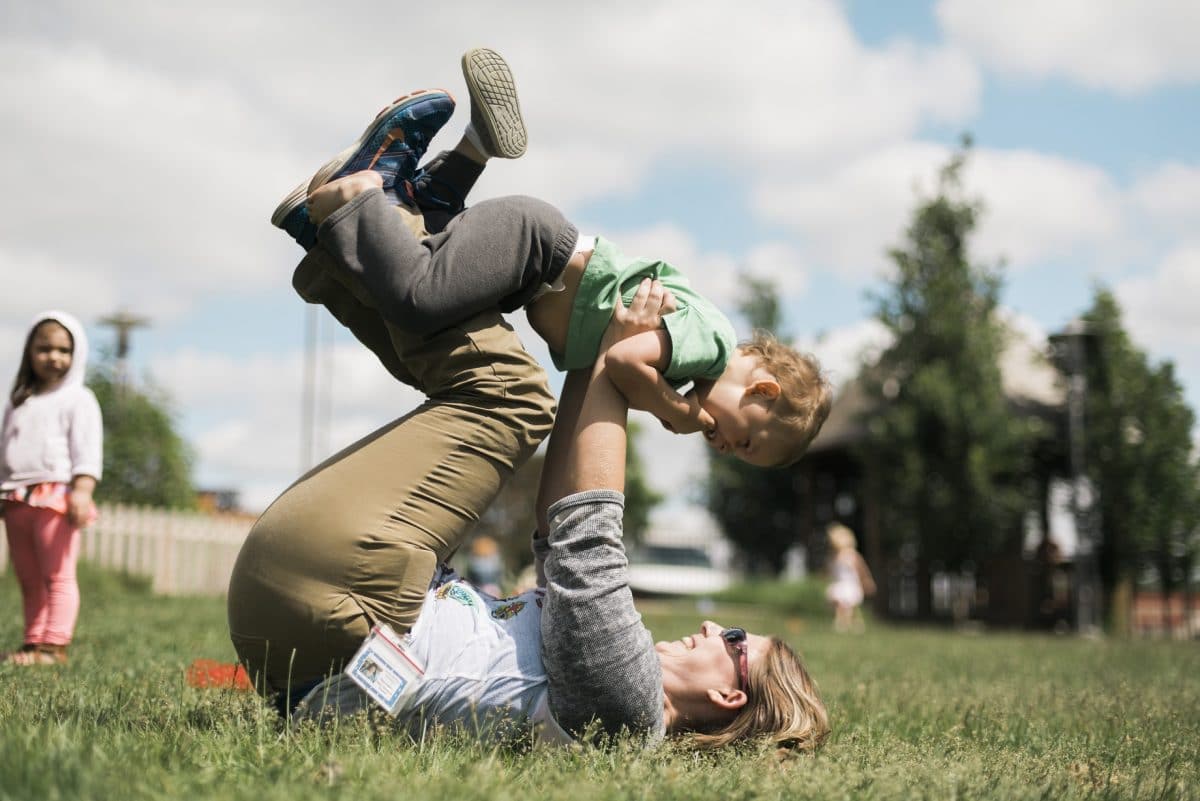Learning from Charlie

“A teacher was watching the children in the sand box when Charlie approached her and asked a simple question: ‘Are you happy?’ The teacher, curious and a bit surprised by the question, replied: ‘Yes, of course I am.’ Charlie responded with all the wisdom of a four-year-old: ‘Then you should tell your face that.’” –Deb Curtis in her new book, Really Seeing Children.*
Sometimes young children seem to live in a different world than we do. They’re trying to figure out pretty much everything in their environment; from ‘what do bugs eat?’ to ‘is my teacher happy right now?’ Their areas of focus change rapidly, but they’re generally trying to find out why and how things work just about all of the time they’re awake.
Then there’s us. Because we’ve spent our childhoods discovering, learning and figuring things out, we now get to apply our knowledge. Learning has a different role in our lives than it did during our childhood. Rarely does it involve survival. At times we can simply sit back, relax, and let the world happen without us for a while.
But Charlie doesn’t have the luxury of relaxing. At four, he has fascinating worlds before him, and he aims to figure them out.
Understanding how other people are feeling is essential learning at his age. Learning to read faces is our first learning. Within seconds of birth, babies start looking at their parents’ faces, even imitating the facial movements they see. They are beginning to learn about these big things upon which they depend.
By age four, Charlie has grown exponentially in his ability to scan his caregivers’ faces for clues as to how they feel. Now, at the sandbox with his teacher, he has made a sophisticated hypothesis about her mood. Just by his asking the question, we can see that he’s noticing that something isn’t right with her. We can’t know precisely why he asks her if she is happy; we don’t have enough information. But because he asks, we know that he sees something amiss, and wants to understand why. We know that he thinks his teacher looks unhappy. His earnest question and thoughtful reply reflect curiosity, empathy, and prior learning about feelings.
What would the world be like if these roles were reversed? What if more adults regularly paused to observe, study and emulate the children around them? What if, rather than think we know stuff, we, like children, develop hypotheses rather than attachments? What if new information really made a difference, and we could easily replace something we thought we knew with something we’ve just learned?
Our adult experiences and responsibilities demand that we “know” stuff. We couldn’t function effectively if we had to learn anew all that we encounter daily. But what if we make an attempt to access that child’s sense of wonder more often? Where would that lead us?
Vacations to new places can reach deeply into areas of our perceptions and emotions that we don’t often access in our day-to-day lives. Especially during foreign travel, when people speaking a language we don’t understand surround us, we all become Charlie.
Snapping back to our everyday world, what can we learn from Charlie about how we appear to children? He reminds us the importance of both how we appear, and of how we act towards the children around us. Young children observe us closely to hypothesize about how we are feeling and how we will react to them. They also use us as models in learning how to manage and express their own emotions. When with children, we have responsibilities both to them, and to ourselves.
In the best of all possible worlds we can be happy inside and out when we’re with children. We can be our “best selves” naturally. Environment has a lot to do with whether or not we can access our best selves.
And here is where nature, and Nature Explore Classrooms come into play. Without using the exact words “best selves” to describe themselves while with children in their outdoor classrooms, many teachers have told us, in so many words, that this is how they feel. The teacher who decided against retiring when her school announced plans for a Nature Explore Classroom. The teacher whose students loved playing with the pot bellied pig she brought to school. The Native American teacher who passes on to her students her traditional knowledge of herbs and plants. The teacher who learned from her student how to hold a bee. The teacher watching from a distance when, on the first day of school, a boy silently takes the hand of a girl he doesn’t yet know, assisting her as she walks the balance log for the first time. Many teachers have told us that their time with children in Nature Explore Classrooms is the highlight of their day.
In their continual explorations of all things, children observe us. When we are with children in environments that inspire their wonder, and inspire our own best selves, their observations of us teach them about their own best selves. If Charlie had been in this kind of environment, in a Nature Explore Classroom, he probably wouldn’t have been as concerned about his teachers’ moods. His attention could have been freed to find that worm, or water the flowers, or build with sticks, or pretend to be a pirate, or collect rocks, or…
* If this story is familiar, you probably remember having read it in the “Exchange Every Day” email on June 8. And if you don’t get EED, and want a daily support for your best self, click here.

